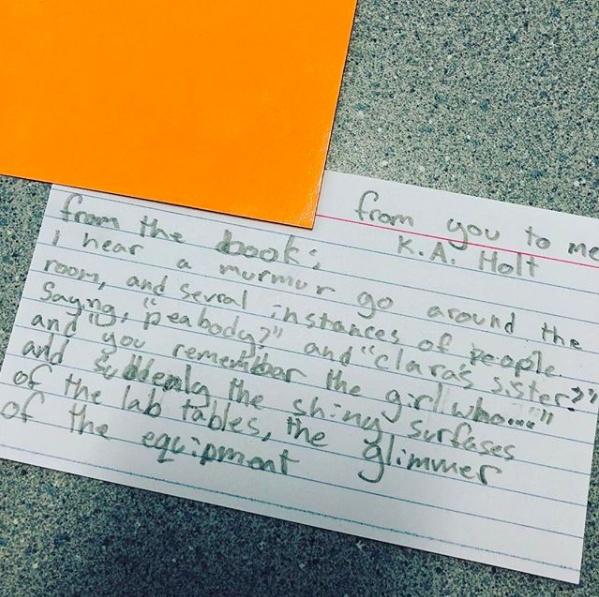
Ask our students what makes them hate reading and many of them will say the work that comes after. The reading logs, the essays, the taking notes when reading, the post-its, the to-do’s. Not the act of reading itself. They share their truths year after year and year after year, I wonder how I am going to see whether they really are understanding and learning without making them drown in assignments that make them hate reading. It is a hard balance to find, especially if your students like ours have reading abilities that range from years above grade level to years below.
While the students will be working on other skills with their reading, right now, we are working on increasing stamina and enjoying their books, a skill that some of our students need a lot of work on. When we introduce too much to them to do, that is when they end up not really working on their reading but rather hunting the text for their answer. This is when they start to dislike reading. While being able to disseminate a text and do the heavy work with text analysis is important, I cannot have them do that all of the time, not every time they read. After all, how many adults do that every time they read?
This year, my colleague, Reidun offered up a great idea; the simple notecard. The notecard is unassuming. It is limited in its scope based on its size and it also does not take much time. Rather than writing anything long, which we only do once in a while, when students have been introduced to a teaching point such as writers using emotive language, we then ask them to return to their own self-selected text and look for an example. As they read they find a sentence or two, write it down and hand it to us.

When I have a moment, I am able to quickly scan through to see who got it and who didn’t, make a note of it and then figure out who needs to be in one of our small groups. Who gets it, who doesn’t. The kids spend most of their time reading, rather than taking notes, and I get a chance to peek into their thought process.
As the year progresses, our skill focus will change, our questions will deepen, and yet, offering students time to “simply” read is something that we will continue to protect every single day. The notecard allows me to peek at skills, to inform my instruction, and to collect data. All without causing a major interruption in their time with the text.
If you like what you read here, consider reading my newest book, Passionate Readers – The Art of Reaching and Engaging Every Child. This book focuses on the five keys we can implement into any reading community to strengthen student reading experiences, even within the 45 minute English block. If you are looking for solutions and ideas for how to re-engage all of your students consider reading my very first book Passionate Learners – How to Engage and Empower Your Students. Also, if you are wondering where I will be in the coming year or would like to have me speak, please see this page.
This sounds like a good idea!
We do not have more than 35 minutes of pure reading time in our school each week. With the primary class I deal with, I just spend time reading to them from a common book. Each child has a copy of the short story book, and they follow along with me. Not all of them read with me though…I’ve noticed that there are a few who look at me and listen with their eyes wide open. And I let them. I find that after a reading, some of the children are eager to get back home and read the story again.
Just this afternoon, I was wondering if I ought to try it with my middle-school children as well. With them, I assign chapters to be read from a common book each week. During their allotted period I put them into groups and hand over some questions for them to discuss with regard to the chapters read. At the end of the period each group needs to summarise what they have discussed. I’ve noticed that most of the children enjoy this.
I use index cards for daily response/journal writings, too. The index card is not as intimidating as an 8.5 x 11″ piece of blank white paper. It’s smaller and somehow more intimate. Many students have shared truths about them and their lives on the smaller cards.
I like this idea. I struggle so much with balancing reading with writing that pushes kids to practice the skills. Thanks for sharing!